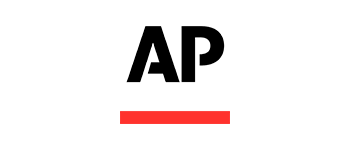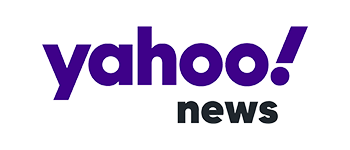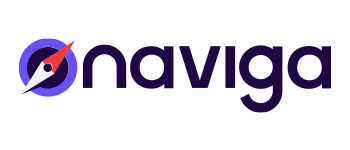Introduction
As blockchain tokenization continues to gain momentum, navigating the complex landscape of legal and regulatory frameworks becomes increasingly crucial. Tokenization, which involves converting physical or financial assets into digital tokens on a blockchain, promises numerous benefits such as enhanced liquidity, increased accessibility, and improved transparency. However, these advantages come with significant legal and regulatory challenges that must be addressed to ensure compliance and foster trust. This blog post explores the key legal and regulatory considerations in blockchain tokenization and offers insights on how to navigate these frameworks effectively.
Understanding Blockchain Tokenization
Blockchain tokenization is the process of representing ownership of real-world assets as digital tokens on a blockchain. These tokens can be traded, transferred, and managed using blockchain technology, offering a more efficient and transparent method of handling assets. Tokenization can apply to a wide range of assets, including real estate, commodities, stocks, and even intellectual property.
Key Legal and Regulatory Considerations
1. Regulatory Classification of Tokens
One of the primary challenges in tokenization is the regulatory classification of tokens. Tokens can be categorized into various types, such as:
- Utility Tokens: Provide access to a product or service within a blockchain ecosystem.
- Security Tokens: Represent ownership in an asset and are subject to securities regulations.
- Payment Tokens: Function as a medium of exchange, similar to cryptocurrencies like Bitcoin.
Each type of token is subject to different regulatory requirements, making it essential to correctly classify tokens to ensure compliance with relevant laws.
2. Securities Laws and Regulations
Security tokens, which represent ownership in an asset, are subject to securities laws and regulations. These laws vary by jurisdiction but generally require issuers to register their tokens with regulatory bodies and comply with strict disclosure and reporting requirements. Key considerations include:
- Registration: Determining whether the token issuance needs to be registered with securities regulators.
- Exemptions: Identifying any exemptions that may apply, such as private placements or crowdfunding exemptions.
- Disclosure: Ensuring that all necessary information is disclosed to investors to meet regulatory requirements.
3. Anti-Money Laundering (AML) and Know Your Customer (KYC) Compliance
AML and KYC regulations are designed to prevent money laundering and other illicit activities. Compliance with these regulations is critical in tokenization to ensure that participants in the token ecosystem are properly identified and verified. Key steps include:
- Customer Verification: Implementing robust KYC processes to verify the identity of token buyers and sellers.
- Transaction Monitoring: Monitoring transactions for suspicious activity and reporting any anomalies to relevant authorities.
- Record Keeping: Maintaining accurate records of all transactions and customer information for regulatory review.
4. Data Privacy and Protection
Data privacy and protection laws, such as the General Data Protection Regulation (GDPR) in the European Union, impose strict requirements on how personal data is collected, stored, and processed. Tokenization projects must ensure compliance with these laws to protect the privacy of participants. Key considerations include:
- Data Minimization: Collecting only the necessary personal data required for compliance and operational purposes.
- Security Measures: Implementing robust security measures to protect personal data from unauthorized access and breaches.
- Consent: Obtaining explicit consent from participants for the collection and use of their personal data.
5. Jurisdictional Challenges
Blockchain and tokenization operate on a global scale, but regulatory frameworks vary significantly between jurisdictions. Navigating these differences is crucial for ensuring compliance and avoiding legal pitfalls. Key strategies include:
- Multi-Jurisdictional Compliance: Developing a compliance strategy that addresses the regulatory requirements of all relevant jurisdictions.
- Legal Counsel: Engaging legal counsel with expertise in blockchain and securities law to navigate complex regulatory landscapes.
- Cross-Border Considerations: Understanding the impact of cross-border transactions on regulatory compliance and reporting requirements.
Case Study: DAMREV’s Approach to Legal and Regulatory Compliance
DAMREV is at the forefront of leveraging blockchain technology to provide secure and compliant tokenization services. Our platform is designed to navigate the complex legal and regulatory landscape, ensuring that all tokenization projects adhere to relevant laws and regulations. Here’s how DAMREV is making a difference:
1. Comprehensive Regulatory Classification
DAMREV uses a rigorous classification process to ensure that tokens are correctly categorized and comply with relevant regulatory requirements. Our team of legal experts works closely with regulators to ensure that all token offerings meet the necessary standards.
2. Robust AML and KYC Procedures
Our platform incorporates advanced AML and KYC procedures to verify the identity of participants and monitor transactions for suspicious activity. These measures help prevent money laundering and ensure that our tokenization projects comply with all relevant regulations.
3. Data Privacy and Security
DAMREV is committed to protecting the privacy and security of participant data. We implement stringent data protection measures and comply with all relevant data privacy laws, including GDPR, to ensure that personal information is handled responsibly and securely.
4. Multi-Jurisdictional Compliance
Our platform is designed to address the regulatory requirements of multiple jurisdictions, ensuring that tokenization projects can operate globally with confidence. We engage legal counsel with expertise in international blockchain and securities law to navigate the complexities of cross-border compliance.
Challenges and Considerations
While the benefits of blockchain tokenization are clear, navigating the legal and regulatory landscape requires careful planning and expertise. Key challenges include:
- Regulatory Uncertainty: The regulatory environment for blockchain and tokenization is still evolving, requiring continuous monitoring and adaptation.
- Technology Integration: Implementing robust compliance measures requires significant investment in technology and expertise.
- Cost and Complexity: Navigating complex regulatory frameworks can be costly and time-consuming, requiring dedicated resources and expertise.
Conclusion
Navigating the legal and regulatory frameworks in blockchain tokenization is critical for ensuring compliance and fostering trust in the market. By addressing key considerations such as regulatory classification, securities laws, AML and KYC compliance, data privacy, and jurisdictional challenges, tokenization projects can operate successfully and securely. Platforms like DAMREV are leading the way by providing secure and compliant tokenization services that empower businesses and investors to capitalize on the benefits of digital assets.
At DAMREV, we are committed to harnessing the power of blockchain technology to drive innovation and growth while ensuring compliance with all relevant legal and regulatory requirements. Our platform provides secure, transparent, and compliant tokenization services, enabling businesses and investors to navigate the future of digital assets with confidence. Join us in exploring the transformative potential of blockchain tokenization through a secure and compliant approach.















